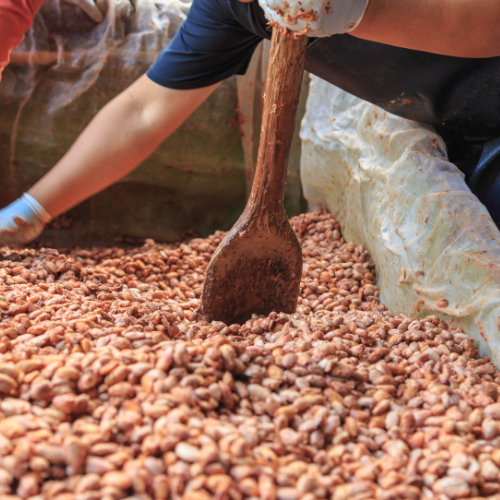The cacao tree requires shade in order to keep the soil on the forest floor humid and rich in nutrients.
The correct conditions of shade and sunlight means constant upkeep of careful pruning of trees. Too much sunlight will dry the soil, and too little sunlight will promote fungi and parasite growth.
The secret to great cacao is the correct balance of all and of course lots and lots of love and care from the farmers.

The cacao beans are remove from the inside of the cacao fruit pod which contains both the beans and white sweet pulp by hand.

The beans along with the sweet white pulp are then left to ferment in wooden crates for 3-5 days.
After fermentation is complete, the beans are then sun-dried in the intense heat. When the beans are dry and have reached a perfected flavour state they are ready to be husked.

Once sun dried, the beans are selected, cleaned from debris and any other impurity, and go through a dehydrator.
They are then passed through a strong current of hot air that blows away the shells and recovers fragmented cacao beans, known as nibs. Cacao nibs are the fragments of the husked cacao bean, containing all the nutrients and beneficial properties of this ancestral superfood.
The second state on the production process is the grinding of the Cacao nibs to produce a thick chocolate like paste. The nibs contain approximately 50% of natural fat, so this is how a thick paste is possible. Once cooled, the Cacao paste becomes solid and has the appearance and taste of rich dark and hard chocolate.
This rich dark hardened cacao block is exactly the same as the cacao bean. Roughly half is cacao butter (fat) and half are cacao solids. This is chocolate in it’s most purest form 100%!
Ancient civilizstions boiled water and added cacao paste to create the sacred elixir xocolatl adding spices that include pepper, chilli and vanilla.
See also Cocoa for the difference between to two.


